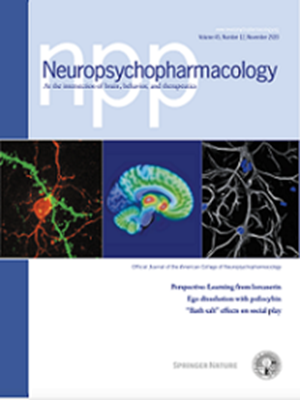Anti-seizure effects of WS-3, a TRPM8 agonist, on focal onset seizure mouse model via reduction of extracellular glutamate levels
IF 6.6
1区 医学
Q1 NEUROSCIENCES
引用次数: 0
Abstract
The development of novel anti-seizure drugs targeting novel mechanisms is crucial, especially for patients with intractable epilepsy. Previous studies using focal onset seizure rodent models have demonstrated that Icilin and WS-3, agonists of the transient receptor potential melastatin 8 (TRPM8) channel, suppress drug-induce epileptiform discharges (EDs) and seizures (ESs). In contrast, TRPM8 deficiency exacerbates EDs and ESs. This study investigated the mechanism underlying the anti-seizure effects of the TRPM8 agonist, WS-3, using a focal onset seizure mouse model. Mice were injected with WS-3 either before or after administering the seizure inducer, penicillin G potassium. EDs, ESs, and glutamate levels were subsequently evaluated. In wild-type (WT) mice, WS-3 injected after the seizure inducer reduced glutamate levels and ED power by 44% and 60%, respectively, with a positive correlation between WS-3 efficacy and these parameters. WS-3 injection before seizure induction suppressed the increase in glutamate levels and the development of ED and ES, with positive correlations observed among the three parameters. Conversely, TRPM8-knockout mice showed no anti-seizure effects from WS-3. TRPM8 deficiency led to a further increase in the glutamate levels, ED power, and ES severity after the seizure inducer injection. Additionally, TRPM8-deficient mice experienced EDs with fewer glutamate exposures and shortened latency to ED development following seizure induction. These findings suggest that TRPM8 agonists suppress the development of EDs and ESs by reduction of extracellular glutamate levels, indicating that TRPM8 channels may represent a promising treatment option for epilepsy.

TRPM8激动剂WS-3通过降低细胞外谷氨酸水平对局灶性癫痫小鼠模型的抗癫痫作用。
开发针对新机制的新型抗癫痫药物至关重要,特别是对于难治性癫痫患者。先前使用局灶性癫痫发作啮齿动物模型的研究表明,Icilin和WS-3是短暂受体电位美拉他汀8 (TRPM8)通道的激动剂,可抑制药物诱导的癫痫样放电(EDs)和癫痫发作(ESs)。相反,TRPM8缺乏会加重ed和ESs。本研究利用局灶性癫痫小鼠模型研究了TRPM8激动剂WS-3抗癫痫作用的机制。小鼠在给予癫痫诱导剂青霉素G钾之前或之后注射WS-3。随后评估EDs、ESs和谷氨酸水平。在野生型(WT)小鼠中,癫痫诱导剂后注射WS-3可使谷氨酸水平和ED功率分别降低44%和60%,且WS-3的功效与上述参数呈正相关。癫痫诱导前注射WS-3可抑制谷氨酸水平升高和ED、ES的发生,且三者呈正相关。相反,trpm8基因敲除小鼠对WS-3没有抗癫痫作用。TRPM8缺乏导致注射癫痫诱导剂后谷氨酸水平、ED功率和ES严重程度进一步增加。此外,trpm8缺陷小鼠出现ED时,谷氨酸暴露较少,癫痫诱导后ED发展潜伏期缩短。这些发现表明,TRPM8激动剂通过降低细胞外谷氨酸水平来抑制EDs和ESs的发展,表明TRPM8通道可能是一种有希望的癫痫治疗选择。
本文章由计算机程序翻译,如有差异,请以英文原文为准。
求助全文
约1分钟内获得全文
求助全文
来源期刊

Neuropsychopharmacology
医学-精神病学
CiteScore
15.00
自引率
2.60%
发文量
240
审稿时长
2 months
期刊介绍:
Neuropsychopharmacology is a reputable international scientific journal that serves as the official publication of the American College of Neuropsychopharmacology (ACNP). The journal's primary focus is on research that enhances our knowledge of the brain and behavior, with a particular emphasis on the molecular, cellular, physiological, and psychological aspects of substances that affect the central nervous system (CNS). It also aims to identify new molecular targets for the development of future drugs.
The journal prioritizes original research reports, but it also welcomes mini-reviews and perspectives, which are often solicited by the editorial office. These types of articles provide valuable insights and syntheses of current research trends and future directions in the field of neuroscience and pharmacology.
 求助内容:
求助内容: 应助结果提醒方式:
应助结果提醒方式:


